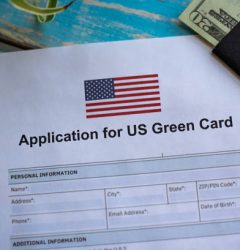Flight planning, hotel and vehicle reservations, activity planning, and ensuring everything fits within your schedule and price range are all included!
You might think about using an itinerary template whether you’re a seasoned traveler or simply looking to make an orderly travel schedule for your forthcoming trip.
Make the most of your work trip or holiday by organizing your activities, managing your time, tracking your costs, and providing you with a breakdown of all your vital travel information in advance.
Visit the sections below to learn what constitutes a good itinerary template and find 10 free templates you can use to aid in preparing your upcoming vacation.
YOU WILL ALSO LIKE: The Ultimate Guide on how to Create the Perfect Travel Itinerary
10 Best Travel Itinerary Template for your next Plan
Sure, here are 10 travel itinerary templates that you can use for your next trip:
- Basic Travel Itinerary: This simple template includes information about your travel dates, flights, accommodations, and activities.
- City Tour Itinerary: Ideal for a city break, this template allows you to plan your itinerary day by day, including popular attractions, restaurants, and shopping destinations.
- Road Trip Itinerary: If you’re planning a road trip, this template will help you map out your route and plan stops along the way.
- Beach Vacation Itinerary: For a relaxing beach vacation, this template includes details about your accommodations, beach activities, and nearby attractions.
- Adventure Travel Itinerary: Perfect for adventure-seekers, this template includes information about outdoor activities such as hiking, kayaking, and rock climbing.
- Family Vacation Itinerary: This template is designed for families, with sections for planning activities and attractions that are suitable for children of different ages.
- Cruise Itinerary: If you’re planning a cruise, this template will help you plan your itinerary day by day, including shore excursions and onboard activities.
- Solo Travel Itinerary: Designed for solo travelers, this template includes information about accommodations, restaurants, and activities that are safe and suitable for solo travelers.
- Honeymoon Itinerary: Ideal for newlyweds, this template includes information about romantic activities, special dining experiences, and other romantic attractions.
- Group Travel Itinerary: If you’re traveling with a group, this template allows you to plan activities suitable for everyone and accommodate different interests and preferences.
Click here to see templates
How do you write a good travel Itinerary?
Writing a good travel itinerary can help you maximize your time and budget, and ensure that you get to experience the highlights of your destination. Here are some tips on how to write a good travel itinerary:
- Determine your budget: Before you start planning your itinerary, it’s important to have a budget in mind. This will help you prioritize your activities and choose accommodations and transportation that are within your means.
- Research your destination: Do some research on your destination to find out what attractions, activities, and events are available. Look for travel guides, online reviews, and recommendations from locals or other travelers.
- Choose your accommodations: Decide on your preferred accommodations and book them in advance. Consider factors such as location, amenities, and price.
- Plan your transportation: Determine the best way to get to your destination and around the area. Book flights, trains, buses, or rental cars in advance to save money and ensure availability.
- Create a schedule: Create a schedule for each day of your trip, taking into account travel time, meal breaks, and other downtime. Be realistic and don’t try to fit too much into one day.
- Prioritize your activities: Prioritize your activities based on your interests and the amount of time you have. Choose a mix of popular tourist attractions and off-the-beaten-path experiences.
- Leave some flexibility: Leave some flexibility in your itinerary to allow for unexpected events, weather changes, or spontaneous adventures.
- Include practical information: Include practical information such as emergency contact numbers, local currency information, and important addresses and phone numbers.
- Share your itinerary: Share your itinerary with friends or family members so that they know your plans and can reach you in case of an emergency.
YOU WILL ALSO LIKE: 40 best Places You should Consider Traveling with your Kids
Overall, a good travel itinerary should be well-planned, realistic, and flexible. It should allow you to make the most of your time and budget while leaving room for unexpected adventures and experiences.






